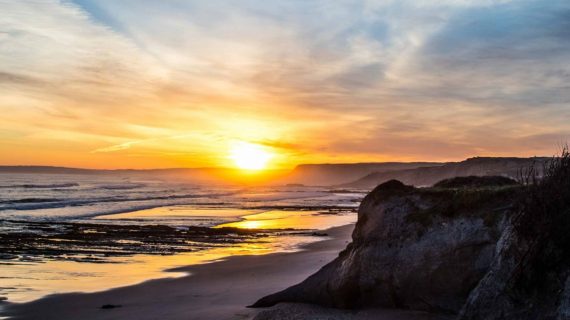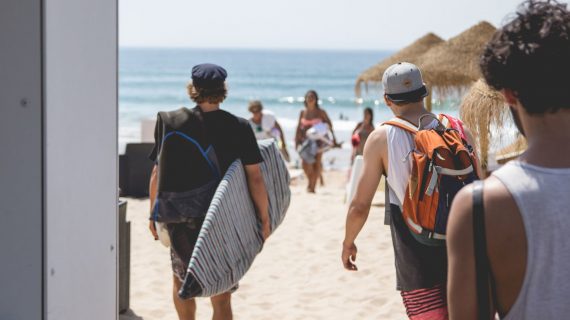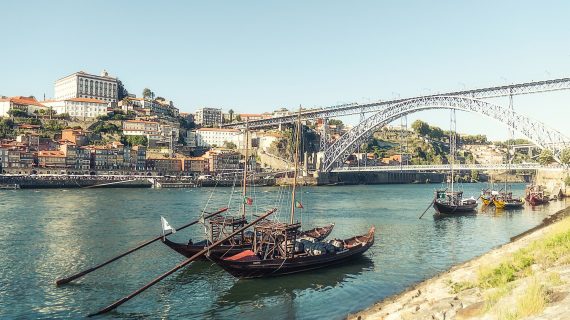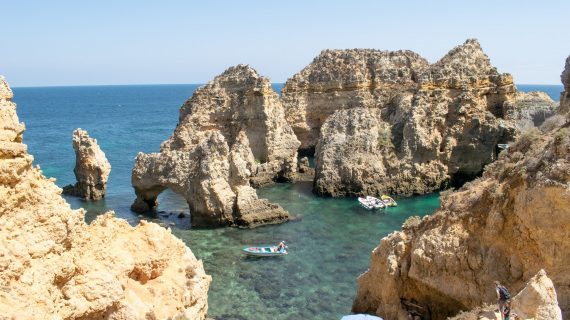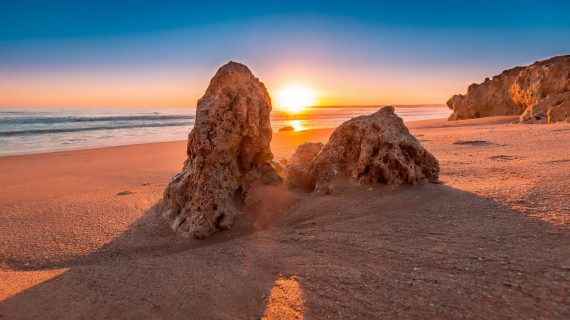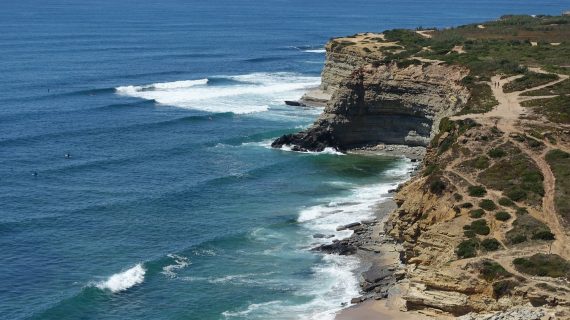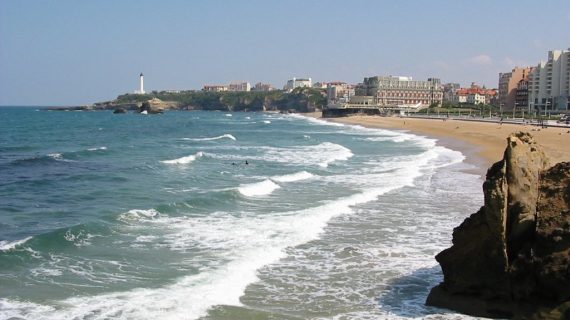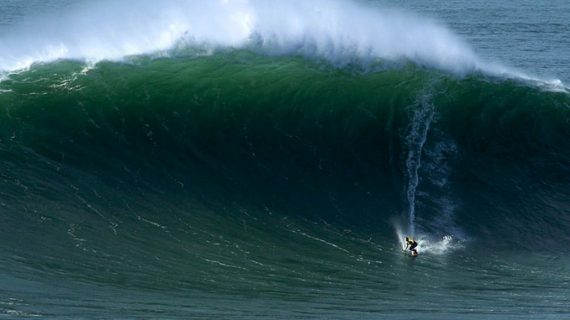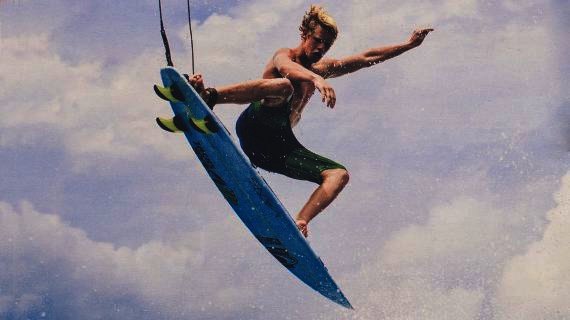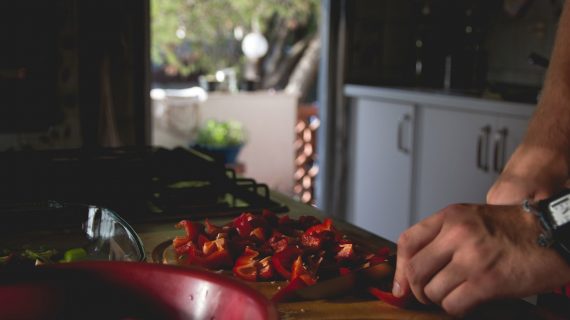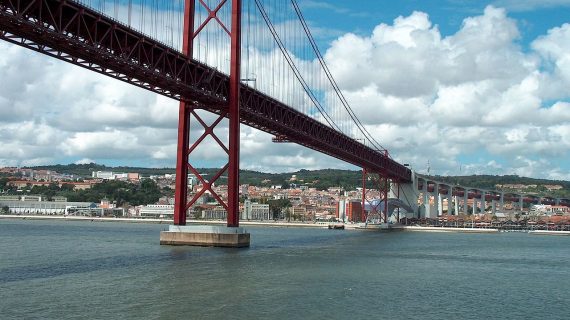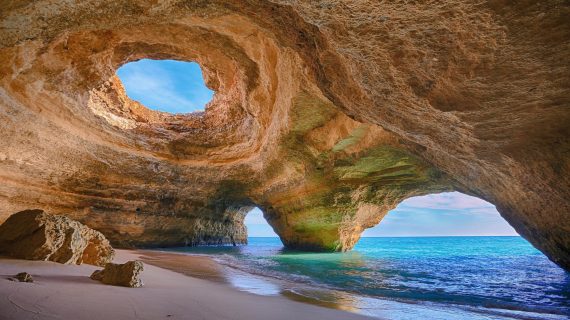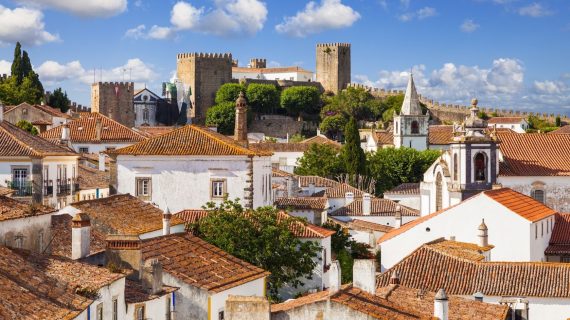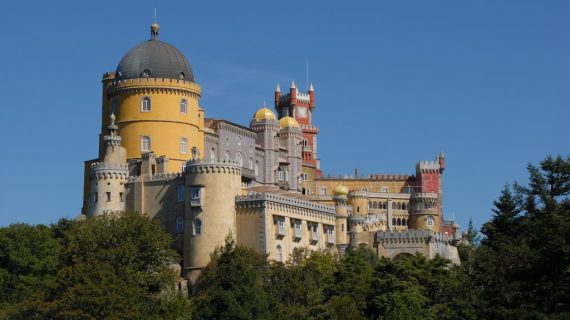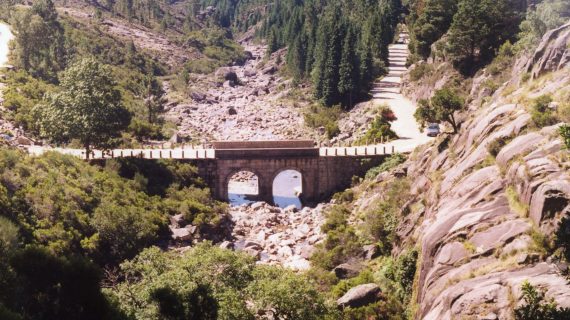Surf camps Portugal - Huge swell window and endless surf spots
SURFCAMP ERICEIRA ab 330 € - Surfen in Portugal!
- 7 Tage Unterkunft + Surfkurs
- 5 Surf Sessions + Surftheorie für Surfer aller Levels
- Unterkunft in Mehrbettzimmern oder stylishen Holzvillen
- Gut ausgestattete Gemeinschaftsküche
- Garten mit Pool und Grill
- Gratis Sport- und Surfmaterial
- Legendäre Partys
A country made for the world's best pastime
Our surf camps in Portugal will make surfers' hearts leap with joy! Portugal is situated in South Western Europe, bordered by Spain to the North and East, and the Atlantic Ocean to the West and South. This positioning gives Portugal one of the largest swell windows in the whole of Europe, picking up any swell from the North, South or West. No matter where you are located along the country’s 1,794 km coastline, you are guaranteed to be only a short drive away from some great waves. Portugal’s extensive coastline offers a great wealth of surf breaks. From the absolute beginner to the pro on tour, Portugal’s wide variety of surfing beaches will easily satisfy surfers at all levels!. It is no wonder that Portugal is one of the favorite destinations for a surfing holiday in Europe! And of course, the vibrant surf camps in Portugal await you!
Surf guide Portugal
Planet Surf Camps Portugal and surf schools
We offer you two surf camps in Portugal. Our surf camp in Costa da Caparica is addressed to all the surfers over 18 and offers best conditions for perfect surf holidays in Portugal. With 300 sunny days a year, a 30-kilometre-long sand beach and the proximity to Lisbon Costa da Caparica is the all-season surfing hot spot in Portugal. You'll get accommodation, meals and daily surf lessons here. When there are no lessons you're free to rent surf equipment or take part in the many exciting activities inside and outside the surf camp. You are accommodated in our surf camp on the cliffs of Costa da Caparica during the most beautiful time of the year. The beach is only three minutes away by car so you won't lose time on the way to surfing or to beach activities.
With our certificated and experienced surf instructors, you're always in good hands and you can be sure to improve your skills while you're here. Our surf camp photographer logs your first steps on camera so you'll never forget this unique experience. If you still have power left after surfing you should discover Lisbon's night life. The largest city in Portugal and Europe's second oldest capital fascinates visitors with its rich culture, impressive backdrop and attractive night life. Best requirements to spend an unforgettable time while surfing in Portugal!
Our second surf camp is in the world-famous region Peniche. You can choose between two locations. The first location is right in Peniche where WSL's MEO Rip Curl Pro takes place every year. Here you live in very neat apartements on the peninsula Baleal which is close to the small fishing town Peniche and the surf spots. The second location is Santa Cruz/ Praia Azul. Our camp is in a 3 star hotel on the dunes of Santa Cruz. From the dune, you have a stunning view on the sea and the waves of the Atlantic Ocean. But there's not only the beauty of nature. In only 45 minutes you're in the fascinating world city Lisbon. Even more culture to experience you'll find in the wine town Torres Vedras which is 15 minutes away from the surf camp and in the historic Óbidos which is 30 minutes away.
Peniche or Costa da Caparica? What the places have in common are consistent conditions all year long and fantastic waves. As a surfer, you shouldn't worry about the swell - Portugal takes care of it. The country with its long coast line is made for surfers!
Surfing in Portugal - the different regions
Portugal’s most northerly surf region is composed of the provinces Minho and Douro. In this region, you will find the city of Porto, which is a UNESCO World Heritage Site and Portugal’s second largest city. The region of Minho and Douro is praised for the consistency of its waves, and its comparatively uncrowded line-ups.
In the surfing world, Beira is best known for its big wave surfing. In winter, tourists travel from all over the world to see the surfing professionals ride record breaking waves of over 70 ft. However, surfers not wishing to risk their lives in some of the Earth’s largest waves should not be put off by the Beira region as there are plenty of breaks to suit surfers of all levels!
Peniche has plenty of long sandy beaches to explore, and is one of the most popular choices for a surfing holiday in Portugal. Summers here are long and winters mild. From a surfing point of view, the region of Peniche is perhaps best known for its barrels, in particular for Supertubos, a Portuguese stop on the WSL Championship Tour. There’s a wealth of surf spots within the region and the geography of the area ensures that there are decent waves in pretty much any conditions.
Considered by many to be Portugal’s surf capital, Ericeira’s 8 kilometres of coastline offer numerous breaks all in close proximity, ensuring more time in the water and less time in search of waves. Ericeira has beaches to cater for all surf abilities and whilst a large proportion of Ericeira’s breaks do have a rocky seabed there are also some excellent beach breaks available that are more suited for beginners. In 2011 Ericeira was endowed as one of the eight World Surfing Reserves and is currently the only World Surfing Reserve to be located in Europe. Ericeira is also home to our Portuguese partner surf camp Ericeira!
The Lisboa region, home to Portugal’s capital, is well known for its consistent surf breaks. The region has a variety of breaks all in easy reach of the bustling city of Lisbon. The city of Lisbon itself is Portugal’s largest city, and the oldest city in Western Europe. The year-round surf and mild winters makes the region of Lisboa an attractive option for many surfers.
The Alentejo region of Portugal is one of the country’s less developed and less populated regions and as such you will find plenty of uncrowded waves here. The warm and dry climate is welcoming and there is a mixture of beach and reef breaks.
Having both a west and a south coast gives the Algarve region of Portugal a wide swell window that pretty much guarantees that there will be surf somewhere in the region. The Algarve is famous for its warm climate, with surfers from all over Europe flocking to the region in the winter months when water temperatures in the Algarve are much more favourable than elsewhere on the continent. The Algarve offers a mixture of breaks with enough choice to satisfy any level of surfer.
Surf spots in Portugal
Surfing in Minho und Douro
Vila Praia de Âncora
Vila Praia de Âncora, alternatively called Gelfa, is a long sandy beach with several right and left breaks. Vila Praia de Âncora is a suitable location for absolute beginners to catch their first wave. But also the more experienced surfers will find some fun breaks on this lengthily beach. A north-west swell and easterly wind works best here. Vila Praia de Âncora works at all tides and the swell is 1 – 8 ft.
Azurara
At Azurara beach (sometimes spoken of as Praia de Arvore) there are two main breaks. There is a left-hand beach break at the beach’s centre and a right-hand river mouth break on the right of the beach where the river is. The left-hand beach break works more consistently than the river mouth break does. Azurara works best at mid to high tide, with a south-west swell and a north easterly wind direction. The swell range here is 2 – 8 ft, and this beach is good for all surf levels, although there are some rocks on the seabed to be wary of.
Leça da Palmeira
Leça da Palmeira has very consistent waves and you will find both rights and lefts on this peaky beach break at all tides. Leça works best on an easterly wind and a westerly swell. Swell height on this sandy break is 1 – 8 ft. Beginners can learn here but all surfers should be mindful of the rocks.
Esposende
Esposende is yet another sandy beach break in the region of Minho and Douro with rights and lefts where all levels of surfer can gain more experience in the water. Esposende works best on a mid or high tide with a westerly swell, and easterly wind direction. The swell here ranges 1 – 6 ft.
Afife
Afife is regularly described as a less crowded Supertubos. The break of Afife offers plenty of barrels for advanced surfers. You will find both rights and lefts here and a swell of 2 – 10 ft. Afife works its best with an easterly wind, south-west swell, and at low to mid tide. Afife is a pretty consistent break and surfers searching for the larger waves should head towards the southern end of this beach break.
Surfing in Beira
Cabedelo
Cabedelo is a right hander and was previously a stop on the World Tour. At Cabedelo, rights peel off a jetty, with fast and powerful waves. Cabedelo works best on a low to mid tide, a north-west swell and a north-easterly wind. All levels of surfer can have fun at Cabedelo, with swells of 2 – 10 ft.
Praia de Mira
Praia de Mira is a sandy beach break that can be enjoyed by all levels of surfer. Praia de Mira works better when the tide is high, with a north-west swell and an easterly wind direction. The swell here is 1 – 6 ft.
Furadouro
The jetties at Furadouro form good rights and some decent shorter lefts. There is 1 – 8 ft swell at this sandy break. Furadouro works best on a low to mid tide, easterly winds, and a westerly swell. Furadouro is suitable for all levels of surf experience.
Praia da Barra
Another popular break in the Beira area is Praia da Barra, and it is a good spot for beginners to learn at. Praia da Barra works at all tides and the waves break off the sandbar onto a sandy seabed. With a south-west swell and easterly wind Praia da Barra is at its best. Swell range here is 2 – 8 ft. Praia da Barra is a classic break of the Beira region.
Praia do Norte
Praia do Norte which is close to the village of Nazaré is a beach break famous globally for its big wave surfing. Thus, this break is only suitable for surfers of a professional proficiency. The waves here can be huge, record breakers reaching well over 70 ft. However, on the average day the swell size is typically 3 – 20 ft. The powerful waves of Praia do Norte work best on an Easterly wind, and a Western swell.
Surfing in Peniche
Santa Cruz
The beach breaks of Santa Cruz are a great spot for beginners to learn. Working at all tides, the left and right breaks of Santa Cruz are best when there is an easterly wind and a north-western swell. The swell here is 2 – 8 ft.
Praia Azul
Praia Azul is a beach break, that breaks with both rights and lefts. This break works best at mid tide, with easterly wind, and north-western swell. The swell height at Praia Azul is 2 – 8 ft. Praia Azul is great for all levels of surfer, although novice surfers should avoid the submerged reef at the beach’s northern end.
Praia de Areia Branca
Praia de Areia Branca is a sandy beach break suitable for all levels of surfer. Here you will find lefts and rights no matter the tide height, and 2 – 8 ft swell within a relatively uncrowded environment. To work its best, Praia de Areia Branca needs easterly winds and the swell to be in a westerly direction.
Lagide
The left-hand reef break of Lagide is a consistent spot in the Peniche region for the more experienced of surfers. Lagide works best at low to mid tide, when there is a south-easterly wind, and north-west swell. There is 2 – 10 ft swell at this rocky reef.
Supertubos
For the professional surfer, there is Supertubos as one of Portugal’s most famous waves. A stop on the World Tour Surf Championship, Supertubos is renowned for its heavy, long tubes. The lefts here are long, but there are also shorter rights off the main peak. Subertubos has a sandy seabed and is working its best with a south-western well and north-easterly winds at mid tide. There’s a 3 – 10 ft swell height.
Surfing in Ericeira
Praia da Foz do Lizandro
Praia da Foz do Lizandro or ‘Foz’ for short is a river break with a sandy seabed. Multiple peaks give rise to both lefts and rights and the swell range is 2 – 8 ft. This spot works best at low to mid tide, with easterly winds, on a south-west swell. The waves in Foz are pretty consistent and this is a suitable spot for all abilities, from the absolute beginner to the pro.
São Julião
São Julião is a beach break that works at all tides with both lefts and rights. This popular spot works best with easterly winds and westerly swell. The swell height at São Julião is 2 - 8ft and is a suitable break for beginners.
Praia de Ribiera d’Ilhas
The right-hand reef break of Ribiera d’Ilhas is probably Ericeira’s most famous. This break works best with easterly winds and a north-west swell, regardless of the tide height. Swell range is 2 – 12 ft. Ribiera d’Ilhas is popular for its barrels and is a stop on the WSL World Tour Surf Championship. This right-hander is suitable for both intermediate and advanced surfers.
São Lourenço
São Lourenço is a right-hand reef break that works best at low to mid tide, with easterly winds and a north-west swell. The swell range here is 6 – 18 ft. São Lourenço is one of Portugal’s famous big wave breaks and as such is best suited to advanced surfers.
Coxos
Coxos is a right-hand reef break with plenty of power and is well-known for its heavy barrels. This spot works best at low to mid tide, with easterly winds, on a north-west swell of 4 – 12 ft. Due to strong rip currents, a difficult entry and exit and the power of the break, Coxos is only suitable for experienced surfers.
Surfing in Lisboa
Praia do Guincho
Praia do Guincho is one of the most consistent breaks of the Lisbon region. It’s a sandy beach break and works best at low to mid tide, with a north-westerly swell and an easterly wind. The swell size at Praia do Guincho is 2 - 8 ft, with right and left breaks. Praia do Guincho is a suitable break for beginners.
Carcavelos
One of Portugal’s first surfing beaches, the beach break of Carcavelos delivers both left and right breaks. Carcavelos works at all tides, but best on a South Western swell and a north easterly wind. The swell range is 3 - 10 ft, and all levels of surfer can enjoy this very popular break.
Costa da Caparica
The beach of Costa da Caparica stretches nearly 30 kilometres. Given its length you can pretty much always find a spot in Costa da Caparica that’s working and along its length you’ll find several different left and right beach breaks. However, generally the waves are best on an easterly wind and a south-west swell. The several groynes at the northern end of Costa da Caparica give the sand bars here increased stability and thus it’s at this end of the beach you’ll find the best breaks. However, there are still some good waves to surf as you move further south along the beach, and these more southerly breaks of Costa da Caparica you will often find to be less crowded. The swell size at Costa da Caparica is 2 - 10 ft. The variety of options that Costa da Caparica offers will suit all levels of surfer. And the best thing about it: It's the home spot of one of the surf camps Portugal.
Lagoa de Albulfeira
Lagoa de Albulfeira is a beach break suited to those surfers who have plenty of experience. Throughout the year you will find good lefts here, and, from May to September, when the lagoon and the sea are joined up there is a great right surf break too. Lagoa de Albulfeira works best when the tide is going out, on a north-west swell and easterly winds. This swell size of Lagoa de Albulfeira is 2 - 6 ft.
Bafureira
Bafureira is a point break upon a reef seabed and is often considered one of the top waves of the Estoril coast. Although more popular for its rights, lefts are also common at Bafureira too. Bafureira is best surfed at mid tide and should be avoided at low tide due to the emerging rocks. When a southern swell and northerly winds come together this break is at its best. Bafureira is suitable for both intermediate and advanced surfers, but is probably best avoided by those new to a surfboard due to the reef.
Surfing in Alentejo
Porto Covo
Porto Covo, also known as Praia Grande, is a beach break with waves that beginners can learn on. This sandy spot works well with a north-west swell and easterly winds and is best surfed at low to mid tide. Porto Covo offers both right and left breaks and has a swell height of 2 – 10 ft.
Praia de Odeceixe
A beach break with a sand and rock seabed, Praia de Odeceixe can be surfed by those of an intermediate ability. Praia de Odeceixe will only work at low tide, but its lefts and rights are a fairly popular Alentejo spot. With easterly winds and a north-west swell Odeceixe will work its best, and swell height ranges 2 – 6 ft.
Vila Nova de Milfontes
For experienced surfers, there is the river mouth break of Vila Nova de Milfontes, one of the most popular breaks of the Alentejo region during the summer season. The waves of Vila Nova de Milfontes are at their best under a westerly swell and easterly winds. The spot works regardless of the tide height and offers up some powerful, hollow lefts and rights. Surfers should be aware of a rocky seabed and some strong rip currents.
Malhão
Malhão is one of the most consistent breaks of Alentejo, and works at all tides. It is a sandy beach break that can cater for all surf abilities. North-west swells and easterly winds work well here, and a 2 – 8 ft swell can be expected. Malhão is a fun break and a classic of the Alentejo region.
Zambujeira do Mar
Zambujeira do Mar nicknamed ‘Zambi left’ is a beach break for experienced surfers. The lefts here have speed and power and the spot works best under a north-west swell and with an easterly wind direction. Low to mid tide is preferable at Zambujeira do Mar and there is 2 – 6 ft swell.
Surfing in Algarve
Arrifana Reef
The point break of Arrifana Reef is hailed as one of the best rights that Portugal has to offer. Arrifana Reef is definitely only for the experienced surfer with swell size of 6 – 18 ft and rocks and strong rips which are potentially hazardous. This break works best at low to mid tide with westerly swell and an easterly wind direction. It is one of the most popular waves in Portugal.
Zavial
Also referred to as ‘Z-Point’, Zavial puts forward fast, powerful rights to experienced surfers. This point break has a rock and sand seabed and is a very popular Algarve surf spot. To work its best, Zavial requires a south-western swell, north-easterly winds and a mid to high tide. Swell range is 3 – 8 ft.
Beliche
Beliche is another Algarve spot that is suited to advanced surfers. Beliche is a beach break with both rights and lefts. To work, Beliche needs north-easterly winds, a southern swell, and 3 – 12 ft swell. Low to mid tide is best.
Praia da Cordoama
Praia da Cordoama is a beach break suitable for all levels of surfer, though there are some rocks to be careful of. Praia da Cordoama works on an easterly wind and a north-west swell. Best at mid to high tide with a swell size of 2 – 8 ft.
Praia da Rocha
Rocha is a very consistent beach break that is appropriate for even the newest of surfers. Rocha has a sandy seabed and 2 – 8 ft swell. It will work at all tides but best when there is a north-easterly wind and a south-easterly swell.
You see: Portugal has a giant amount of good surf spots and nice conditions. You can be sure to find sweet breaks around the Surf Camps Portugal.
Travelling to and around Portugal
When to visit
Portugal is a year-round surfing destination, owing to its wide swell window and favourable climate. However, very generally the more northerly regions are best Spring through to Autumn and the more southerly regions Autumn through to Spring. You can expect summer water temperatures of approximately 18˚C and winter water temperatures of approximately 12˚C though you’ll find the winter temperatures in the Algarve to be a few degrees warmer than this.
Travelling to Portugal by Plane
Portugal’s main airports to fly into are Lisbon, Faro, and Porto. You can find direct flights to these airports from the majority of European countries. The main airlines offering flights to these airports are TAP Portugal, easyJet, and Ryanair. You can find affordable flights to any of these airports using the flight search engine Skyscanner.
Travelling Around Portugal by Bus
Buses and coaches connect the majority of Portugal’s towns and cities and provide an affordable way to travel about. Many of the smaller towns and villages that don’t have train stations can also be reached by bus. Often it is less expensive to travel by bus than by train in Portugal. Rede Nacional de Expressos is the main coach provider in Portugal and has routes all over the country.
Travelling Around Portugal by Train
Portugal has a good railway system which you can use to travel between Portugal’s towns and cities. The principal rail company is called Comboios de Portugal.
Travelling Around Portugal by Car
For those wanting to rent a car whilst in Portugal, you will find several car rental companies at any of the airports, and in most large towns and cities. If you wish to rent a car in Portugal you must be at least 21 and have had your licence for over a year.
Fact is: Don't miss out on the surf camps Portugal when you're around. The vibes of a surf camp are incomparable.
The History of Surfing in Portugal
The History of Surfing started in Polynesia many years ago. It was not until the late 1950’s and the arrival of surfboards from Biarritz in France that surfing really began in Portugal. It is Pedro Lima, who is considered to be the pioneer of surfing in Portugal, and he surfed year-round without a wetsuit (they weren’t invented yet!) The popularity of surfing in Portugal grew only gradually until 1987, when Portugal entered their first national surf team into the European Surf Championships. The Portuguese team finished 4th in the competition and suddenly surfing in Portugal became a lot more popular.
However, it wasn’t until the 1990s that the surf scene in Portugal really gained momentum. The 99' Buondi Pro Surf Championship in Ericeria, gained the class of Portugal’s waves recognition on a global scale. When Bruno Charneca (aka ‘Bubas’) beat four-time world champion Kelly Slater in the ASP World Championship Tour, Portugal’s popularity as a surfing destination only grew further.
From then on, the surfing scene in Portugal has never decreased and today Portugal is one of the most sought surfing destinations in the whole of Europe.
Surf events in Portugal
The most famous surf event in the Portuguese surf calendar is undoubtedly the Portuguese leg of the World Tour. Each year the World Surf League’s Championship Tour rolls into Portugal and some of the World’s best male and female surfers battle it out for the title. The men’s competition, the MEO Rip Curl Pro Portugal, takes place at Supertubos in Peniche, and the women’s, the Cascais Women’s Pro, at Praia de Carcavelos in Cascais.
Portugal is also famous worldwide for its big wave surfing. In the winter months, crowds flock to Nazaré in Beira to watch professional big wave surfers take on the waves of Praia do Norte, which reach over 70ft, in the World Surf League’s Big Wave Tour.
In addition to these surfing events there is the Portuguese Surf Film Festival. It is held each July in Ericeira. It has been a yearly event since 2012 and celebrates the best in surf videography.
Culture in Portugal
Portugal is a country of approximately 10 million citizens. The currency is the Euro and the main religion is Catholicism. The national language is Portuguese but English, French, and Spanish are also widely understood. Mainland Portugal uses the Western European time zone of UTC+00:00. In Portugal, you drive on the right.
Hardly no surfing country in the world offers as many historic cultural treasures in the interior. The architecture is characterized by Romanic and Gothic cathedrals and castles. The trip possibilities to architectural sights are inexhaustible.
Weather, climate and water temperature
In the main season from June to September it gets very hot in Portugal. The average temperature is between 26 degrees in June and September to maximum 29 degrees in August. In Winter, it's mild because of the ocean proximity and in summer the land gets cooled by the sea. There are regional differences though. The north is more humid and cooler whereas the south, especially the Algarve is very dry and warm. The surf camps Portugal are located in the center further south.
The water temperature depends on the season. In the colder month, you have to be tough because the average temperature is 15 degrees. In summer, it climbs up to 20 degrees. Anyway, you shouldn't relinquish the wetsuit.
Food in Portugal
Whilst on your surfing holiday in Portugal, be sure to check out some of Portugal’s delicious typical dishes. Also the surf camps Portugal offer a wide range of Portugal's finest food. Just a few dishes to look out for:
Bacalhau – Portugal’s national dish. There are reportedly more recipes for this dried, salted cod than there are days of the year!
Alheira – Portuguese sausages, made without pork. They are usually made from chicken, rabbit, duck, quail or veal.
Arroz de Tamoril – Monkfish stewed with tomatoes, garlic and rice.
Cataplana de Marisco – A seafood stew cooked in a special copper pan.
Pastel de Nata – A sweet egg tart pastry.
Top 10 Highlights in Portugal
1. Lisbon
You can't travel to Portugal without visiting the capital city at least once. Big parts of Lisbon's architecture are influenced by the Gothic and Romanic occupation. At some places, it feels like being carried back 900 years ago. Unfortunately, the tradition-rich mariner city has structural problems nowadays like ailing residences. That's why the number of inhabitants is going back more and more. Half a million people are living in the city area today. Many Portuguese who work here live in the surroundings of Lisbon.
There is no big city in Europe that has a such consistently warm climate like Lisbon. The temperatures are at 20 degrees all year long. Costa da Caparica where our surf camp is located borders on Lisbon so you won't get around a visit. Also our camps in Peniche are only 30 - 45 minutes away from the charming city. So have a seat in the traditional trams, enjoy the historic city and the Ponte 25 de Abril which is an important part of the cityscape. The statue Cristo do Rei that reminds of the famous statue of Christ in Rio de Janeiro is a popular tourist attraction. From Costa da Caparica where one of our surf camps Portugal is located you're quickly in Lisbon's city center.
2. Algarve
The Algarve in the South of the country is the most visited region in Portugal. You shouldn't be put off by that because the wonderful nature is so extensive that you will certainly find lonesome places without tourists. There are enormous cliff coasts made of sand stone and clay schist which merge in the turquoise blue water.
Especially Praia de Benagil is very appealing for travellers. It's a beach located in a giant rock cave which has a hole in the ceiling where the sun shines through. When you're not in the mood for surfing the high-quality waves, you should consider Praia de Benagil as an excursion destination.
3. Ericeira
Ericeira is a name which you should keep in mind as a surfer. It's the only World Surfing Reserve in Europe. Only nine spots on the planet are granted with this honour because the Save the Waves Coalition sets the requirements high. A spot has to offer excellent surf conditions and also ecological and social aspects are considered in the process of recognition. Ericeira made it to the program in 2011 because important surf competitions take place here, there is a large biodiversity and a vivid surf culture. Ericeira gets in line with names like Gold Coast, Santa Cruz or Malibu. That makes Ericeira to Portuguese's surfing Mecca and shouldn't be missing on any surf trip. The region is located right in between our two surf camps Portugal.
4. Óbidos
Óbidos offers a whole different culture than Ericeira does. It's only 30 minutes away from Peniche and carries their visitors back to the time of castles and knights. Óbidos' architecture was built between the 13th and 16th century and lends itself perfectly as a day trip. If you're lucky you can witness the annual Middle Age fair where you can delve into the culture of Portuguese ancestors.
5. Porto
Porto is the second largest city in Portugal and UNESCO World Heritage Site. If you already liked Lisbon you will love the 'capital city of the North'. It's also full of history like Lisbon but the infrastructure is less sordid. You won't be able to miss out on the magnificent Gothic cathedrals and the iconic Ponte Dom Luis, the iron bridge that spans over the river Douro. Also Porto's night life is worthwhile. There is a variety of beautiful and vivid bar districts. If you visit the North anyway you should cast your anchor here for a few days.
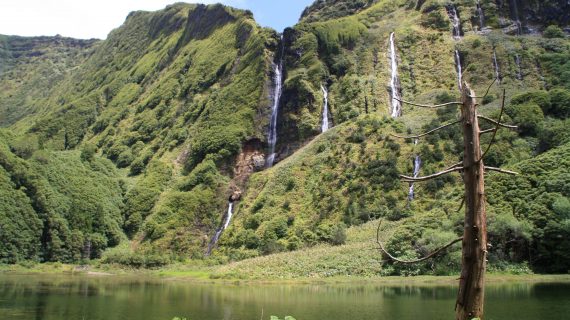
6. Azores
The Azores is an archipelago which is part of Portugal but 1400 kilometres away from the mainland and therefore from the surf camps Portugal. A little day trip isn't very realistic obviously but the Azores definitely make sense as separate holidays. The nine islands are almost unnaturally beautiful with their green landscapes, blue water and giant volcanos. The volcanic earth makes the ground fertile. Not only ornamental plants but also pineapples, bananas, wine, tobacco and tea are planted here. From Germany, you need only five hours to the paradise island. And the best thing about it: You can surf here.
7. Madeira
Another of these little paradises that are part of Portugal but located in the middle of the Atlantic Ocean. The subtropical island is also called 'the flower island' because of the amazing flora. Because of the volcanic ground the island thrives in all colours and the climate which is springlike all year long pulls its weight to it. Who can't get enough of natural spectacles and fresh air has to go to the flower island Madeira asap.
8. Sintra
Back on the mainland and very close to Lisbon is Sintra. Like at many places in Portugal you'll find an UNESCO World Heritage Site here. Sintra's cultural landscape reveals splendid palaces and castles from the Romantic period. The most famous palace is the Palácio de Pena which is on a hill in the middle of forests like the German pendant Schloss Neuschwanstein. Sintra is very close to our surf camp in Costa da Caparica.
9. Coimbra
Coimbra is Portugal's educational and intellecutual centre. Unlike the famous Porto and Lisbon Coimbra is situated in the interior. The University is the oldest in Portugal and one of the oldest in Europe. If you visit the city you could come up with the idea of enrolling at the Uni for a few semesters because the city is so beautiful and made for students. But after a few days we'll probably miss the ocean and the waves and we head towards the coast again.
10. National Park Peneda Gerês
Last but not least we can't withhold a national park in our Top 10. Well, it's not that easy in Portugal because the National Park Peneda Gerês is the only one the country offers. It stretches for about 700 square kilometres and has everything you wish from a national park. Waterfalls, mountains, rivers, hiking routes and countless animal species. You should go there!
Why Portugal with Planet Surf Camps?
This question is very easy to answer in Portugal. In many cases the country is overshadowed by the bordering Spain. But in the matter of waves no European country can fool Portugal. The giant swell window reaches from far north to the south coast and in the west 1000 of kilometres welcome the waves that built up far away from the coast. They form unimpededly into long lines and run on the countless beach and reef breaks.
The word 'paradise' is used to often unfortunately so it can't live up to the amazing conditions in Portugal. Nevertheless, Portugal is exactly that: A surfer's paradise. Our surf camps Portugal which are close to surf spots for beginners, intermediates and pros are the perfect basis to discover the country. By car, by bus or by foot. But one thing for sure: with the board. We look forward to your visit. Até breve!


